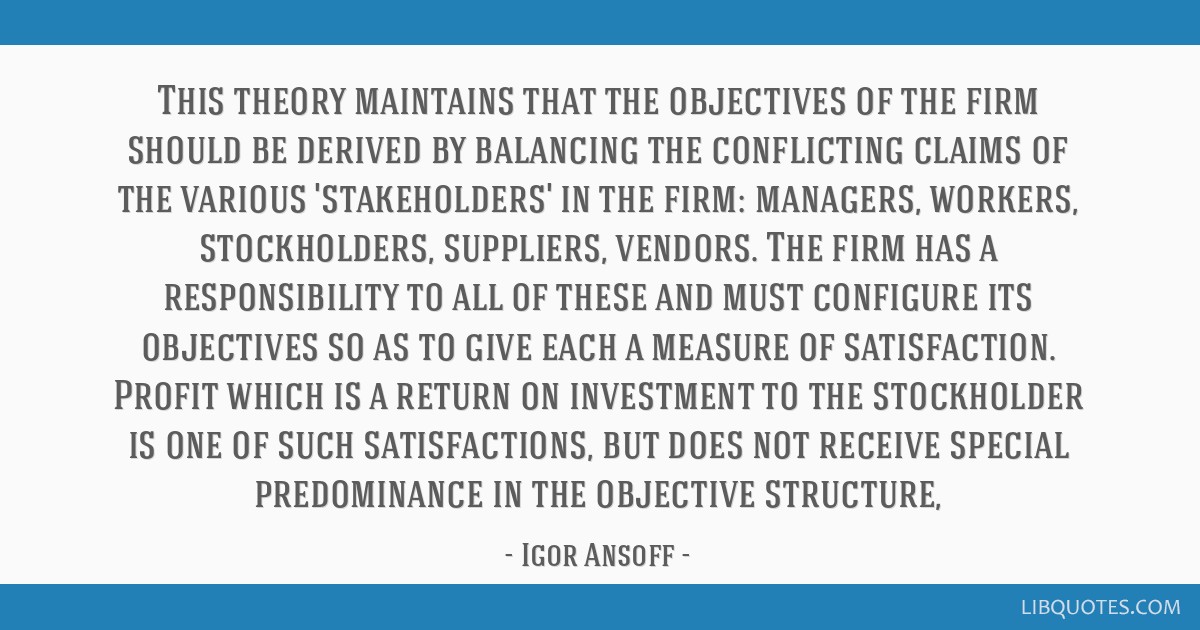This theory maintains that the objectives of the firm should be derived by balancing the conflicting claims of the various 'stakeholders' in the firm: managers, workers, stockholders, suppliers, vendors. The firm has a responsibility to all of these and must configure its objectives so as to give each a measure of satisfaction. Profit which is a return on investment to the stockholder is one of such satisfactions, but does not receive special predominance in the objective structure,
p. 34; Cited in: Russell L. Ackoff (1994), The Democratic Corporation. p. 37 - Corporate Strategy, 1965























